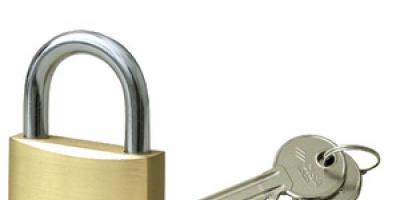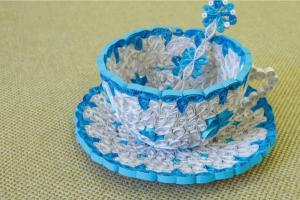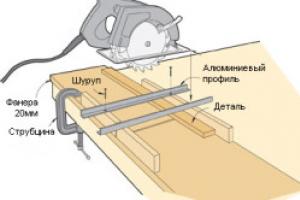We don’t always throw things away right away; many people have irons, hair dryers, etc. Appliances. And it is quite possible to find an old one, maybe even still working, which has been replaced with a new modern unit. And it’s good that you haven’t thrown it away yet, because we’ve found some tips on what you can do with an old mixer for your home.
Figure 1 Don’t rush to throw away old things
How to make a table grinder from a mixer?
You can make a grinder for sharpening knives or other objects only from a running mixer. To do this we need a part of the body with a motor. It is good if it is a stationary instrument with a removable portable flask. The transformation process will occur as follows.

If the mixer was initially set to operate at several speeds, all sharpening and polishing must be done at maximum speed. It will be more productive.

Figure 3 Second life for a mixer - a sharpening tool
Connecting equipment to pedal control
It is not always convenient to select and manually control the operating speed of new equipment. Can be supplemented grinding machine pedal as follows:
- disassemble the body;
- disconnect the electronic control;
- connect the motor directly and make the connection to the pedal.
However, you need to know that not every model is suitable for connecting to a new device. Incorrectly selected equipment will lead to engine overheating and failure. All this can end in a short circuit. It is not difficult to calculate the required power; each product has a label indicating the nominal parameters.
To calculate the optimal pedal load current, you need to divide the mixer motor power by the network voltage. In our case it is:
- 700 watts / 220 volts = 3 amps.
If the pedal has a factory rated load current higher than 3 amperes, it is quite possible to make such a connection.
This device is suitable for sharpening household knives, meat grinder knives, home tool, can be used to polish wooden, plastic or metal objects.

Figure 4 Foot pedal motor control frees your hands
Boring machine from a working old mixer
The engine in the old mixer has good power, its performance has been tested by time. You can make a drilling machine useful for everyday use with your own hands; for this you will additionally only need a motor from a portable mixer, 2 jars: coffee and freshener, the diameter of one should be slightly larger, and a small piece of decorative leather.
The step-by-step remodeling process is as follows.

Figure 5 Motor from a conventional mixer
- and remove the 220 volt motor.
- The fan must be moved as close to the engine as possible; to do this, you will need to remove all unnecessary elements that are attached from the base of the fan to the shaft housing. They do not bear any functional load on the future product. After this, you need to screw the fan to the end of the shaft leg.
- Next, you need to cut off the top from the air freshener can to the beginning of the narrowing point.
- The cut top should fit perfectly into the hole of the second coffee can. For reliability, it can be secured cold welding and wait until it hardens completely. You first need to make small holes in a circle at a distance of 2-3 mm from the edge, which will serve for additional air exchange while the fan is operating.
- After the weld has hardened, it is necessary to insert an empty bearing of a similar size into the remaining hole for future fixation of the bur, then carefully press the hole with a hammer. After this, cover all voids from the inside with epoxy resin.
- Cut a rectangular hole in the jar to connect the control to the outside. Then insert the motor inside the housing and secure it to metal frame, which should be pre-cooked or used from improvised means.
- To close the bottom, you can use a metal drain from the sink; the holes will serve for additional air exchange. It should be welded using liquid welding.
- After assembling the equipment, its body should be refined with a piece of leather.
In the finished bur, you need to place a washer on the attachment to the shaft or tighten any fastener. With your own hands and zero investment, you have created a universal device with which you can create real masterpieces in your home.

Figure 6 You can find many options for using a drill in everyday life
Making interesting objects from flasks
If equipped with a bulb without cracks, and it is still in good condition, you can make a candlestick that will bring comfort and coziness on winter evenings. There are a lot of manufacturing options:

There are a lot of decoration options; you need to choose one that fits into the style of the room.

Figure 8 For external decoration, you can use special paints
Disassembling the mixer
If the mixer no longer works, and we have already thought of a use for the flask, there is no need to rush to throw away the housing with the motor. You can disassemble it and pick up something useful for future alterations. The disassembly process must be carried out as follows.
- Unscrew the connecting screws with a screwdriver.
- Visually determine the cause of the engine malfunction in order to understand which internal parts or assemblies may be useful later.
- If the engine is not running after disassembly, you need to pay attention to the following components and elements:
- mode switch;
- indicator light;
- engine. If you disassemble it, you can later use the rotor and stator;
- wires;
- coil with copper wiring;
- network wire.
So, finally, the good old mixer can serve as spare parts in future alterations.

Figure 9 Disassembling the old mixer
Do-it-yourself things are not only about saving money, it is also a manifestation of creativity. After all, it’s much more pleasant to use a tool into which you put your soul into making. Don’t rush to throw away old things; you can always find a use for them and give a second life to your once-loved equipment.

Figure 10 Second life for an old mixer
Typically, we throw away kitchen appliances that are no longer functional. Take, for example, a blender that is past its expiration date; there's really no other way for him other than to be trashed. However, don't throw away that broken blender!
This DIY project is for you if you think that throwing away broken equipment is a waste. In the video below you will learn how to use an old blender and repurpose it to become a decent drill or even an engraver!
The blender motor is powerful enough to handle light drilling and engraving jobs, so instead of throwing away your blender, why not repurpose it so you can still use it for your future projects? Watch the video of Evgeniy Budilov and how he successfully turned his old kitchen blender into another useful tool.
Don't throw away your blender! Repurposing old products at home is one way to save money, in addition to reducing waste in environment and gives you an additional tool to use at home.
The video below shows how you can turn an unwanted blender into a mini electric drill or engraver. Many thanks to the creator of the video “Evgeniy Budilov”.


In this video you will see how an old blender can make a decent engraver, drill or hand drill machine. As shown, the motor is powerful enough to handle wood, plastic and soft metal. RPM figures are nothing short of good... Budilov
We decided to make squash caviar. The question arose: how to chop zucchini?
Blender too small and weak for such tasks, and the meat grinder is not able to grind into a homogeneous paste.
Small lumps remain, and the caviar turns out to be grainy. Therefore, I decided to make it big and powerful blender from a drill that every DIYer has.
The design turned out to be so simple that it does not require any drawings and is literally done “on the knee”.


Materials and tools
- Drill. (every DIYer has one);
- PVC pipe 50 mm (plumbing store);
- PVC pipe plug 50 mm. (ibid.)
- Metal chrome tube with a diameter of 16 mm (magazine furniture fittings);
- Plastic dowels 14 and 8 mm. (building materials store);
- Self-tapping screws 16 mm with a wide head (ibid.);
- Screws M8 and M6. (ibid.);
- Blades for mounting knife (household goods);
- 50 mm clamp (ibid.);
- Empty tin can (trash can)

Making a blender
The blender consists of 3 nodes.1 - drive, 2 - housing, 3 - blade shaft.
Since the drive is an ordinary drill, we will consider the remaining 2 nodes.
Making a knife shaft
Since the knife shaft is the most labor-intensive, we’ll start with it.The most optimal solution is to cut into one end of a rod with a diameter of 9 mm internal thread M6 to a depth of 20 mm. Unfortunately, not everyone has access to lathe(can be done without a lathe, but it’s troublesome), therefore there is a second, very technologically advanced option. At the end of a steel tube with a diameter of 10 mm. hammer in a plastic dowel with a diameter of 8 mm. And screw an M6 screw with knives into it. But I have never seen steel tubes with a diameter of 10 mm on sale anywhere. Therefore, those for whom the first and second options are unacceptable choose the third. This is using a 16 mm tube, which can be purchased at any furniture hardware store. You should buy the one with the thickest walls. Because they are different...
A 14 mm dowel is driven into one end of this tube. and the next dowel is hammered into this dowel 8 mm and into the dowel 8 mm. The M6 screw is screwed in. Since it is impossible to clamp a 16 mm tube directly into the chuck of an ordinary drill, we also hammer a 14 mm dowel into which an M8 screw is screwed into the opposite end. Leave 30 mm of protruding screw for clamping in the drill chuck, cut off the rest. Only in this option it is necessary to take into account that the optimal length of the knife shaft (without knives and the part that is clamped in the chuck) is 100 mm, and the length of the dowel 14 mm is 80 mm.
it makes sense to shorten the dowels to 50 mm.


We've sorted out the tube, now it's time to attach the knives. On an M6 screw with a wide flat head, we put it through washers (I used 2 washers between each knives) 4 blades for the mounting knife, broken off to required length. We arrange the knives crosswise and tighten them with a nut. We screw this screw with knives into the 8 mm dowel. It screws in quite tightly, but holds securely. So, the knife shaft is ready.


Case manufacturing
The body is made from PVC pipes 50 mm in diameter, plugs for this pipe, and a tin can. And another clamp.
We cut off the thickening for the rubber cuff from the pipe socket, since it will not be needed.
Next, take a suitable shallow empty tin can and drill a 1-2 mm hole in the center of the bottom. larger diameter knife shaft. We drill the same hole in the center of the plug. Along the perimeter of the can we drill several holes with a diameter of 10 - 12 mm to allow the ground mass to exit (Drilling holes in a tin can is much more convenient feather drills on wood). We combine the tin can with the plug and secure it with self-tapping screws.


We place a pipe on the plug and also secure it with self-tapping screws. To ensure that the pipe fits tightly onto the plug, several turns of electrical tape should be wound around the plug.

We measure the length of the knife shaft fixed in the chuck and adjust the body to this size. In the upper part we make 2 slots 30 mm deep.

Since the internal diameter of the pipe is slightly larger than the diameter of the drill neck, we need a gasket, which we will make from the remainder of the same pipe. We cut a ring 20 mm high and cut out a 15 mm section from this ring. Glue the ring with inside extension cord so it doesn't get lost.
We glue it to one point so that it can be compressed. Next, we attach the extension to the neck of the drill (or simply measure it with a ruler, which is somewhat more accurate:), mark the location of the key hole on it, and drill it with a 20 mm drill.

The body is ready.
By the way, I forgot to write. If you don’t have a suitable empty tin can at home, you can replace it with any suitable lid, or use a plug for a 100 mm pipe. Which will look much more “branded” :)

We put the body on the drill, without securing it completely yet, insert the knife shaft into the previously spread cams, turn the body until the hole for the key on the body coincides with the socket on the chuck, tighten the shaft with a key, and finally secure the body with a clamp.
All. As they say, the design does not require adjustment and starts working immediately when turned on.

It also grinds potatoes into a homogeneous mass for hash browns, which previously had to be manually grated on a fine grater, because the meat grinder leaves lumps, apples for applesauce, crushes nuts for cookies, and much more.
P.S. Since I had a steel tube with a diameter of 10 mm, which I cut from another leaky heated towel rail before throwing it away, I used the second option when making the blade shaft.

This review is dedicated to those who do not like to throw away things that are still working. It seems that some nonsense has broken, but the thing has become partially functional and can no longer perform its main function. Buying new thing, and the broken one is put away until better times (the desire to repair it, come up with something)… This review is about how to turn a blender into almost a Dremel.
History: my mother-in-law had a Ufesa blender. Something like this. 
Served faithfully for several years, until one day she decided to cook with it mashed potatoes. But this was impossible to do for this model of blender, since the adapter coupling from the motor to the blade shaft is made of plastic. Due to the temperature, this clutch simply turned and stopped transmitting rotation. The motor works, but the knives do not rotate. The nozzle is non-separable. 
The coupling was removed from the shaft and I went to repair shops looking for a replacement. As it turned out, they don’t make such spare parts, they don’t repair such faults, and in general they advised me to buy a new one, since this model is no longer produced. So a new blender appeared... And the broken one went to the bins to await its fate, where it could be adapted...
And then one day, wandering through the expanses of Aliexpress in the DIY sections, I came across these motor cartridges. This chuck allows you to clamp drills from 0.3 to 4 mm. 
Adapters for different shaft diameters were also sold there.
Bingo! The diameter of the motor shaft was measured and a cartridge with an adapter for a 5mm shaft was ordered.
After some time, I received an envelope with a cartridge, a key, a hexagon and an adapter. 
Now it was the patient's turn.
There is no fastening visible from the outside, so I had to start with the button. 
The button is held on by latches. In attempts to remove the button, the push rod of the button itself was broken. However, we will not need it in the future. 
Under the button there was a single fastening screw for Torx. 
The screw was unscrewed with a regular flat-head screwdriver and the cover was removed. Upon removal, it turned out that there were still two plastic loops at the outlet... 
The inclusion was carried out in this way. The button rod pressed on the spring-loaded contact, when closed, 220V was supplied to the control circuit and the motor turned on. 
This button is not very convenient when working with a Dremel; you need to keep it pressed constantly. Therefore, we will replace the button with a key switch.
Let's mark a hole for it. 
A hole is cut and the edges are processed. 
The button is desoldered from the board. 
and solder a switch on the wires. 
The final trigger mechanism. 
The motor itself can be pulled out of the clamping contacts without any problems. 
IMPORTANT Remember which side the motor is installed on. If you install the motor on the other side (rotating the motor 180 degrees around the axis of rotation), the contacts will change and the motor will rotate in the other direction.
If anyone needs such functionality, then it is enough to install a switching toggle switch that changes these contacts. 
Close-up of the output shaft. 
All that remains is to attach the adapter to the shaft. 
insert the sleeve with buttons. You don’t have to return this sleeve with the buttons to its place, then through the holes for the buttons there will be access to the screws securing the adapter to the shaft. But I thought it looked more aesthetically pleasing with closed holes. 
And place the cartridge itself on the adapter.
We close the case. 
Due to the shape of the body, such a Dremel cannot be mounted on a table, only held in your hands. However, I also have a regular Dremel with a clamp.
Runout test according to the method from the comments.
Let me end the story here. I'm planning to buy +30 Add to favorites I liked the review +134 +190
The blender is a motor equipped with an attachment. Nothing complicated. The bowl with the knife is placed on the output shaft of the electric motor, and the engine lock is switched off. The assembled device is started by the power button in cruising or pulse mode. The process is helped by a speed regulator, a cord with a plug, and less often a fuse. It is not difficult to disassemble the blender, the main thing is to reassemble it later. Can you handle it? Those who doubt it, read on to learn how to repair a blender with your own hands. We recommend avoiding jumping through sections.
How does a blender work?
Nature has created three types of blenders:
- Stationary.
- Manual (submersible).
- Complementary composition of the food processor.
The blender design in each case provides for the presence of an electric motor - the initial driving force; the principle of operation changes according to the tasks performed. Stationary blenders are reminiscent of replenishing combines. You will see two characteristic prefabricated units that help the device perform its duties:
- Engine.
- Bowl with knife.
Let's talk about how the product works. The knife rotates quickly in the bowl, where the chopped products are placed. A specific blade causes the contents to move along a closed path. The knife is located at the bottom. When the electric motor transmits torque to the blade through the output shaft and spindle, the blade's revolutions quickly increase. Due to the speed (thousands of revolutions every minute), the effect of movement of the crushed mass is obtained. The envelope of the blender blade resembles a propeller. The cross pulls fruits and vegetables on top of itself, and throws crushed pieces to the sides.
Then the profile of the bowl comes into play, twisting the movement of the food mass. The walls expand upward, so under the pressure of the flow coming out of the knife, the mash begins to creep upward. In the center, pieces of food fall down. The processed mass reaches the lid and falls back onto the knives. The described process proceeds at a speed beyond the grasp of the eye.
The considered cycle occurs ideally in strong blenders. Cheap ones household models There are not enough revolutions to establish closed motion. The knife cuts the void. Therefore, wanting to chop the cabbage, the cook is forced to add water. The step releases the laws of hydrodynamics, which come into play, making the work of the knives easier. So first! Before fixing the blender (which may not have broken):
- If a low-power blender does not want to grind the mass, the fact does not indicate a 100% malfunction. Try adding water, milk, juice, and repeat the process.
- A simple fact means: the blade of the blender is dull, the speed switch is broken, the motor is lacking required power. The masters say: the problem affects the bowl. More precisely, it lies in the rotating joint of the knife.

Replacing the blender blade
As for the blender knife, it is unlikely that you will be able to sharpen the blade at home by hand. Buy a new one, there are 3 scenarios waiting for you:
- Firstly, the knife is sold as a separate spare part. In this case, remove the old one. An old, clean towel will help. Wrap a rag around the blender blade and unscrew it from the spindle. Please note: the thread is left-handed, so you need to twist it in the opposite direction than traditionally. It happens that the knife is mounted using several nuts. They will help you remove the accessory from the blender. wrench, pliers. The bowl has been removed from the output shaft, the plug has left the socket. The rotating blade of the blender can easily disfigure your fingers, and it will be difficult for doctors to put them back together. It happens that the knife is sold together with the oil seal, change both parts.
- It happens that to dismantle the knife, it is necessary to disassemble the blender bowl. A rare case. Replacement takes place using the described method; take the trouble to update the oil seal covering the spindle.
- Finally, it was discovered that the bowl was not removable. See how to proceed. For such blenders, you will have to change the bowl along with the knife and seal.

Blender speed controller
Frequent problems with blenders are related to the speed switch. Only a master can fully check the functionality. If you have the knowledge of a radio technician, try ringing the part first. Surely it will be immediately clear whether this is the reason for the strange behavior of the blender. The switch is removed from the device (soldered off), and the positions are checked in full. Naturally, during normal operation, the contacts must alternately produce a short circuit, switching the corresponding windings of the electrical heart of the device.
At the same time, try the method described above. Turn on the device, listen to how the engine behaves while working at fixed speeds. There is a pattern: the blender blade moves faster, the buzzing is stronger. Advanced models have a lock against turning on without a bowl.
Note that the safety part was introduced in the 20s of the twentieth century, when the blender was just invented. The patent applicant emphasized: the engine starts when the bowl is installed. Therefore, we consider the option to be fully classic.
The locking mechanism is the reason why the blender has stopped. What else are they doing...
If the blender stops
It happened that the device refuses to work. The situation is resolved more easily than in the case when the blender is too lazy to cut and does not chop.
First, we strain our ears by turning on the device. If a buzzing sound is discernible, then the problem is probably a jammed knife. Remove the bowl and gently press the power lock button with your finger (pencil, pin). It worked - the matter is limited to a bowl, a knife. They told me how to fix the problem. The atypical case is much more interesting: a buzzing sound is heard, the blender stiffens even with the lock released. Surely the cause is the motor - the winding burned out. Here the result is determined by the price of the issue; if there is a way to get a new engine at a reasonable price, it is worth replacing. Cheap models make you throw away the idea of fixing a blender yourself.
When no buzzing sound is detected with the button turned on, we examine the power supply path:
- First of all, check the presence of voltage at the outlet. Practice shows that most problems are resolved at this stage. A blender, like other household appliances, breaks down relatively rarely. Plug into a known-good outlet table lamp or something stronger. If it works properly, we move on to the second procedure.
- To check the cord, we disassemble the blender body. We turn off the device from the network, take a screwdriver. Rare foreign models will require special heads. Throw away the cross and slotted screwdriver. Inside the blender there is a power block carrying a soldered or screwed cord. We check the voltage with a voltmeter, or take a known-good cord, connect it, and try the assembly. The location of the breakdown is localized. In some severe cases, the voltage cannot be measured. Less suitable contacts are covered with plastic and are not removable. Those who avoid cutting the device take a needle and solder a wire to the tip. You will need two homemade gizmos. We turn off the blender from the network, pierce both wires of the cable with needles, and connect the tester terminals. We make sure that the lines do not overlap each other, keep our hands off, and plug into the network. We look at the result on the tester display.
- The above actions are simplified if a fuse is inserted into the blender. We take it out and call. The breakdown is identified - we visit the store and purchase a new one. Parameters (power, current) are inscribed on the glass (ceramic) case. We use numbers when choosing required product in the shop. Avoid attempts to make a makeshift fuse; a rash step will most likely cause a fire. A new one is inexpensive. In the open circuit, measure the supplied voltage with a tester (multimeter). When there is nowhere else to measure the mains voltage (230 volts), the fuse slot will do.
- It happens that the new fuse instantly fails. There is a short circuit inside the blender. The problem affects the integrity of the motor windings and electronic circuits. We try to connect energy consumers one by one to the source, and observe the result. Experts recommend using a homemade bug that can withstand emerging electricity. We connect a multimeter and measure the amperes. The operation is done extremely quickly, otherwise there is a chance that traffic jams will break out at home. We use the measured value to calculate the power. If the figure obviously exceeds that indicated in the passport, the faulty unit has been found. As mentioned above, the problem blocks are: blender motor, printed circuit boards.
- If the described operations lead to the belief that power is present, we undertake to inspect the printed circuit boards. We examine the capacitors for swelling, and the resistors for traces of burning. The tracks should not be torn or peel off from the substrate. A defect from the listed symptoms is found - the cause of the blender malfunction is limited electronic stuffing. If the engine short circuits, the equipment cannot be restored. Winding insulation failure.
Hand blenders
Hand blenders often use commutator motors; the motors can operate when powered by constant and alternating currents. IN simple models Power buttons and brush contacts are available. For spark extinguishing, capacitors are attached near the rotor. Let's say more, in addition to capacitors, varistors short-circuit voltage surges, protecting the windings against combustion. In the simplest models, thermal fuses are placed among the turns. If it burns out, the components should be replaced with new ones. The circuit is used in motors of commutator and asynchronous types, transformers. Repairing blenders with your own hands requires knowledge of the unwritten basics of electrical engineering and electronics. Let’s deal with the basics – knowledge – today.
Internal structure of hand blenders
Commutator motors are equipped with stabilization circuits, but the simplest blenders are devoid of any frills. Varistors make up important node Many devices are protected by more than just motors. In switching power supplies, high-frequency generators are switched off due to overload and the current is closed to the fuses. The result is that the protection is triggered. The fault is identified by replacing the fuse with a light bulb: on - turn off the power, continuing to troubleshoot.

The simplest commutator motor is formed by a pair of stator windings and a good bunch of rotor windings. Under the brushes there is a drum, divided into sections. Each pair of opposing contacts is equipped with a closing coil. To make sure the blender is working properly, ring each one by rotating the shaft by hand. Bearings are often considered the weak point. There are two nodes - anterior and posterior. The lion's share of the load falls on the latter. HADO is used for lubrication. After application, the composition causes the formation ceramic film, which temporarily improves glide while protecting the surface.
In hand blenders, such solutions are used reluctantly, the switching element gets very hot, and there is simply nowhere to place a huge radiator. However, using simple speed adjustments will make the owner’s life much easier.
Underwater reefs identified:
- Sudden changes in voltage consumption require filtering (jumps) along the power circuit and cause sharp changes in the external network. The effect is noted when operating from a generator.
- Speed regulation is a valuable quality, but if the power increases sharply when kneading the dough, the blender will be snatched from the hands of the owner; It is more useful for calm women to buy a blender for home, which produces constant power regardless of the dish being prepared.
In advanced models, the blender device is supplemented with speeds. More often we see individual buttons that press continuously, forcing the engine to work. Done for a reason. The developers realize that a weak female hand gets tired quickly, therefore, the key will most likely be released before the engine burns out. The adjustment technique is often not particularly complex. The output voltage is removed by paired secondary windings of the transformer. There is a change in speed.

Blenders often burn if varicaps protect against power surges; thermal fuses protect the equipment against overheating. An element with a response threshold of 120 degrees is installed in the power circuit. Sometimes a thermal fuse is placed between the turns of the motor (mentioned above). The switching power supply operates according to an ordinary circuit. At the input, the voltage is filtered by capacitors, chokes, resistors, and the signal passes through a high-frequency power transistor (even two). The process is controlled by a microcircuit generator that supplies voltage to the control gate. At the output, the voltage is filtered if necessary, and less often rectified.
A frequent breakdown is winding burnout. Try to buy products equipped with fuses. Make your life incredibly simpler.
The brushed motors are controlled by a voltage cut-off circuit when required smooth transition. In the case of two or three fixed speeds, there is probably no need for such a scheme. The sine wave along the positive and negative half-waves is truncated to a certain area. The effective value decreases, naturally causing a decrease in the revolutions of the commutator motor shaft. As already mentioned, kitchen appliances are often equipped with trivial controls. It is unlikely that repairing a Vitek blender will require in-depth knowledge of circuitry.

Let us add that reusable thermal fuses have been observed that, after tripping after a given period of time, restore the circuit. Others are designed for 100 cycles of operation. Decide for yourself whether the operating resource is sufficient relative to your own view of the device. Let's list what can break (power supply):
- filters;
- diode bridge;
- transformer;
- generator;
- key transistor;
- rectifier output diodes;
- varicaps;
- circuit breakers.
Repairing blenders yourself will require knowledge of basic electronics. Nothing complicated, based on requests in the comments, we will create a topic describing the topic of power supplies. Anyone who is in the know can repair a blender on their own without any problems.

Features of desktop blenders
Hand-held devices are deprived of an important ability - to prepare cocktails that people like. You need a countertop blender with a spacious bowl. At the bottom there are cross-shaped sharp knives, the junction is a real disaster. The motor rod is capped by a relatively soft lower half of the drive coupling. A ring formed by dense rubber has teeth arranged around its perimeter, forming a crown. Each fits into a corresponding recess in the upper coupling. The lower half is devoid of rigid threads. Remove the part with a screwdriver and a hammer, hitting the teeth, setting the rotation clockwise; craftsmen recommend carefully prying the coupling, pulling it up. Then the new part is screwed counterclockwise. The thread, of course, is left-handed.
The coupling is a critical part that protects the engine of the unit against overloads. When the knives jam, you will hear a clicking sound. Be too lazy to turn off the blender - after waiting a while, the lower half of the coupling will become inoperable. There is a problem with the upper half: the seals sometimes leak. Seeing an unfavorable situation, get ready to disassemble the device. Using your hands, unscrew the knife assembly from the bottom of the bowl. The rubber gasket is set aside.
The upper half of the blender coupling is screwed onto a rod fitted with knives, the thread is left-handed. The direction of rotation of the knives is recognized by the front sharp edge. Using a large adjustable wrench, grab the blades through the towel (fabric) at the position of the rod, and twist in the opposite direction of rotation. A pair of rubber sealing washers, one steel, are attached under the upper half of the coupling. Both varieties are removable, the knives can be removed from the assembly. If necessary, the blender blades are sharpened. Please note: there is an additional double rubber seal on the inside of the bowl. Replace parts with purchased ones or those that you managed to get.
Reassembling the blender is carried out in a similar way. Remember: the coupling thread is left-handed. Tighten the nut, avoiding the knives. Be careful not to get cut by the blender blade. The engine in the base under the bowl is not much different when compared with manual models, however, withstands loads better. Often speeds are 2-20, the simplest programs for food processing are included.
Blenders are often sold integral part food processors. The knife shaft is driven through the gearbox. The protection against switching on is mechanical, the drive shaft (cutting, shredding) is located separately, and does not rotate simultaneously with the side one. The rotation speed of the blender is, of course, higher; an overdrive gearbox is required.
The presentation is finished today. The presented models are similar to each other. Knowing how to repair a Tefal blender, a master can repair a Scarlett blender. Further, manufactured household appliances are similar to each other. Readers may not have heard, but 85% of washing machines, like blenders, are equipped with commutator motors. Consequently, the repair follows the same pattern. In our case, speed control is provided by the design. Advantages commutator motors in terms of adjustments before asynchronous ones are obvious. In the latter case, the stator winding is often divided into a fixed number of sections. This method easily reproduces three speeds; the layout is not suitable for advanced solutions. Washing machine Only on spin it has 3-5 speeds. A circuit containing a power switch with a current cut-off mode simply suggests itself.
This is why blender repairs are similar. Connoisseurs of coffee grinders, drills, screwdrivers, mixers and even vacuum cleaners will perform the necessary sequence of actions without noticing a change in the type of equipment.
This is how they produce do-it-yourself repair blender. We recommend repairing the device under warranty; disassembling an expensive model only if necessary. Consider the approximate limit of cheapness to be 3,000 rubles.








